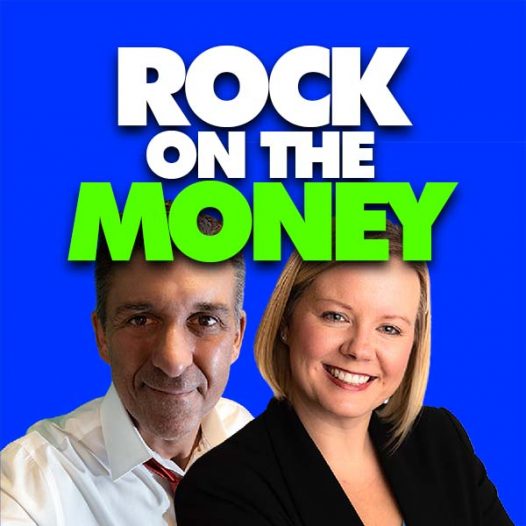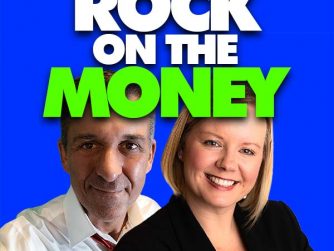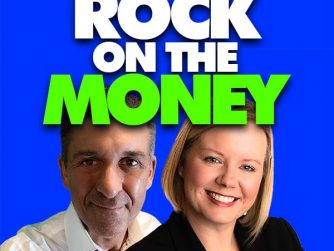Today’s episode goes back to the basics of everything we do. The 7 steps that will get you to financial freedom and the life you have always dreamed of. We have received so many positive comments about these episodes. If you have a question for us please email to podcast@rocklandusa.com
**This post may contain affiliate links, and we may be compensated if you make a purchase after clicking on the affiliate and/or partner links.
The 7 Baby Steps:
Step 1: Start an Emergency Fund
The first step is to save $1,000 for your starter emergency fund.
One of the main reasons people struggle with money is because necessary emergency expenses (like medical bills, car bills, or home repairs) come out of nowhere and drag you deeper and deeper into debt. But if you are preemptively prepared for these surprise expenses then they won’t take you off guard again.
So the very first thing you should do when getting your money in line is to get an emergency fund started. Save up an emergency fund in a separate bank account, until you have at least $1,000 in the account. This will be the start of the emergency fund that will keep sudden necessary expenses from plunging you into deep debts because you weren’t prepared.
Step 2: Focus on Debts
Pay off all debt (except the house) using the debt snowball
The snowball method means that you start by paying off small debts first and work your way up to the bigger debts. Debts can include paying off your car, credit card debts, and student loans.
First, make a giant list of all your debts, every single one, except for your mortgage if you have a house. Then, put your list of debts in order from the smallest debt amount to the largest. Then you go through knocking out each debt by eliminating the smallest debts first and working your way up to the largest debt last.
Step 3: Complete Your Emergency Fund
Save 3 to 6 months of expenses in a fully funded emergency fund.
Now that you’ve gotten all your debts out of the way, it’s time to finish your emergency fund. You can use the same money you were using to pay off debts each month and put it toward your emergency fund until it has enough to cover 3 to 6 months’ worth of expenses and bills. Then you’ll really be prepared for anything.
Reasons to Have an Emergency Fund:
- If you lose your job—you won’t have to worry because you’ll have enough to last you 6 months. This will give you the time you’ll need to find a new job.
- If your car breaks down—you’ll be able to pay for the necessary repairs, the tow truck, or even for a new car in some cases.
- Medical bills—don’t let your health and necessary medical bills keep you from staying afloat financially.
- Home repairs—if something happens to your home you’ll be able to fix the problem rather than living with it.
Having an emergency fund is THE key to keeping you out of debt in the future. After getting yourself out of debt, an emergency fund is what will keep you from getting back into debt in the future.
Step 4: Save for Retirement
Invest 15% of your household income in retirement.
After your debts are gone and your emergency fund is taken care of, it’s time to start seeing to other important savings like retirement. We recommend you take 15% of your gross monthly income and put it toward a retirement fund each month. To figure out how much you should be putting into your retirement fund each month, take your monthly income and multiply that number by 0.15.
Step 5: Save for College Funds
Save for your children’s college fund.
Avoiding student loan debts can be one of the biggest factors in staying out of debt as a young adult. If you can pay for your kid’s college tuition then you’ll ensure their financial security in the future, as they’ll better be able to stay out of debt.
Use either a 529 college savings plan or an education savings account (ESA). Talk to your bank or credit union about setting up these accounts for these specific purposes.
Step 6: Pay Off Your House
Pay off your home rearly.”
Put all the extra monthly income you have into your mortgage so you can finish paying it off early. After this step, you will officially have no debts whatsoever! All of your earnings will go to you instead of getting drained away in large debts and payments.
Step 7: Build Wealth
Finally, it is time to, “Build Wealth and Give.”
Congratulations! Once you’ve reached the 7th step in Dave Ramsey’s Baby Steps, you can start focusing on building your wealth. Don’t forget to keep and maintain those financial safety nets like a healthy emergency fund, retirement account, savings account, and college funds.
Now you are officially in charge of your money rather than it being in charge of you.
Sponsored by Choice Realty Connect : https://choicerealtyconnect.com/ when you are wanting to buy or sell a home, condo or any type of property. Trust Amanda to help match you with up to 3 top agents in your area.
BESTOW – Fast, Free Quote on affordable online term life insurance. No exam, no waiting, no hassles: https://tinyurl.com/y79pywmw
WEBULL – Get 1 FREE stock valued up to $1,200 here: https://act.webull.com/kol-us/share.html?hl=en&inviteCode=HvpbX35EsVmn
Website: https://rockonthemoney.com/
Subscribe to the podcast – all links located here: https://linktr.ee/rocklandusa
Call us with your questions : 989-888-ROCK (7625)
Facebook Group: https://www.facebook.com/groups/your401k/



